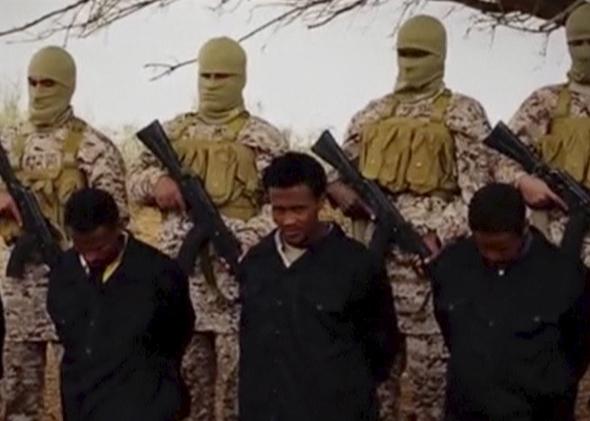By any definition, the massacre in Charleston, South Carolina, this week was an act of terror, no less so than Ku Klux Klan lynchings throughout the South in decades past. Yet without minimizing the act’s tragedy, horror, or broader social implications, it’s worth noting that—compared with the rest of the world—terrorism in America, or terrorism affecting Americans, is a rare occurrence.
On Friday the State Department released the latest edition of its annual Country Reports on Terrorism. In 2014, according to its findings, 32,700 people were killed in terrorist attacks—of whom just 24 were American citizens.
Those 24 Americans were overseas at the time—10 in Afghanistan, five in Israel, four in Syria, three in Somalia, and one each in Egypt and the United Arab Emirates. In this sense, the report loads the deck: a congressionally mandated document, it calls on the secretary of state to detail attacks in each “foreign country whose territory is being used as a sanctuary for terrorists or terrorist organizations.” (Italics added.) In other words, domestic acts of terror are excluded, along with the can of worms that the whole concept would stir up.
Still, go ahead and count every domestic hate crime that fits the State Department’s definition of terrorism in general—“premeditated, politically motivated violence perpetrated against noncombatant targets,” which certainly includes the killings in Charleston, among many others—and the total would pale before what’s going on in those parts of the world where this sort of violence defines daily life.
As many have long theorized, widespread terrorism is mainly the product of war zones, failing states, or a mix of both. Of those 32,700 deaths caused by terrorism, 70 percent took place in five countries, all of them war-torn, with weak central governments—Iraq, Nigeria, Afghanistan, Pakistan, and Syria. These deaths were the results of 13,463 terrorist attacks, and 60 percent of those took place in the same five countries (except for Syria, which on this list is replaced by India, home of an active violent Maoist organization).
And despite the near-demise of al-Qaida, these numbers are soaring. Terrorist attacks in 2014 rose by 35 percent over the year before, and fatalities rose by 81 percent—mainly because groups such as ISIS and Boko Haram launch attacks designed to kill a lot of people. Last year there were 20 attacks that each killed more than 100 people—compared with just two such attacks in 2013.
In all six of those countries, incidents and deaths have risen, in most cases skyrocketed. The most ravaged country remains Iraq, where terrorist attacks climbed from 2,501 to 3,370—and fatalities were up, from 6,387 to 9,929. But the fastest-growing patch of terrorism is Nigeria, where, owing to the savagery of Boko Haram, attacks more than doubled (from 309 to 662) and fatalities quadrupled (from 1,842 to 7,512, making it second only to Iraq in people killed, though the State Department cautions that statistics in Syria may be understated).
And in half of all these killings, the victims weren’t caught in the crossfire of combat; they were the targets of the attacks. Of the year’s 13,463 terrorist attacks worldwide, 5,016 were aimed at private citizens or property, 1,127 at businesses, 418 at religious figures or institutions, and 231 at journalists or news organizations.
It’s not so much that war breeds terror. It’s that these modern wars, especially those in the Middle East, stem in large measure from the crumbling of the colonial order that was laid down at the end of World War I. These wars, many of them civil wars that spill across borders, are challenges to the legitimacy of that order, of those borders, and of the regimes whose power is wrapped up in those borders and that order. It’s the unwinding of authority, and the violent carving-out of separate (often sectarian or millenarian) enclaves, that breed terror. And, though the State Department report doesn’t say so, this terror will continue rising, and perhaps expanding, until—for better, worse, or probably a bit of both—a new order slouches toward the region to be born.
